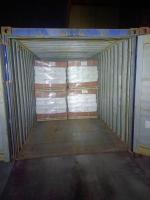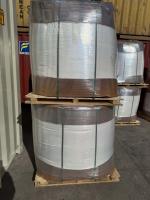Our Products
Polyacrylamide / anionic polyacrylamide of megafloc 2512 or kolon k310A can be replaced by Chinafloc A

anionic polyacrylamide of megafloc 2512 or kolon k310A can be replaced by Chinafloc A
megafloc 2512 or kolon k310A are two models of anionic polyacrylamide with slight charge and high molecular weight ,mainly used for water treatment ,mineral processing and sugar clarification and other applications.
Anionic polyacrylamide (APAM) with slight charge and high molecular weight is a versatile polymer that finds applications across a wide range of industries. Its unique characteristics, such as the ability to form strong, stable flocculants and to enhance water retention and viscosifying properties, make it valuable in various sectors including water treatment, oil and gas, mining, and agriculture. This essay will explore the primary applications of anionic polyacrylamide with slight charge and high molecular weight in detail, considering its roles in these industries while emphasizing the factors that make it suitable for these uses.
1. Water Treatment
One of the most significant applications of anionic polyacrylamide with slight charge and high molecular weight is in water treatment processes. In municipal and industrial wastewater treatment, APAM serves as an efficient flocculant. It promotes the aggregation of fine particles suspended in water, forming larger flocs that can easily be separated by sedimentation, flotation, or filtration.
-
Coagulation and Flocculation: Slightly charged anionic polyacrylamide can effectively neutralize the surface charges of suspended solids, facilitating the process of coagulation. This is especially crucial in water that contains colloidal particles with a negative surface charge. The high molecular weight of APAM enhances the bridging of particles, forming large, stable flocs that settle more quickly and efficiently.
-
Sludge Dewatering: Another critical application in water treatment is sludge dewatering, where APAM aids in the thickening and removal of water from sludge. Due to its high molecular weight, the polymer can create networks between water molecules and sludge solids, improving the dewatering process. This leads to reduced water content in sludge and lower disposal costs.
-
Surface Water Clarification: In drinking water plants, anionic polyacrylamide helps in clarifying surface water by promoting the removal of suspended particles, algae, and organic matter. This process is essential in maintaining the quality and safety of water before distribution.
2. Oil and Gas Industry
The oil and gas industry is another sector where anionic polyacrylamide with slight charge and high molecular weight plays a crucial role, particularly in enhanced oil recovery (EOR), drilling mud formulation, and hydraulic fracturing (fracking).
-
Enhanced Oil Recovery (EOR): APAM is widely used in tertiary oil recovery techniques to improve the viscosity of injected water and thus increase the amount of oil extracted from reservoirs. The polymer reduces the water-to-oil ratio, making the water more effective in pushing the oil towards production wells. The slight charge allows for better interaction with the naturally charged reservoir rocks, while the high molecular weight enhances the polymer’s ability to form viscous solutions, ensuring that the oil is efficiently displaced.
-
Drilling Fluids and Mud: Anionic polyacrylamide is also used in the formulation of drilling fluids, especially in water-based drilling muds. It serves as a viscosifier, helping to control the rheological properties of the drilling fluid, which is crucial for carrying drill cuttings to the surface, stabilizing the wellbore, and minimizing fluid loss in permeable formations. APAM’s ability to thicken fluids even in high-temperature and high-pressure conditions makes it a valuable component of modern drilling practices.
-
Fracturing Fluids: In hydraulic fracturing, APAM is used as a friction reducer and fluid loss agent. It allows the fracturing fluid to flow more easily into the rock formations by reducing the friction within the pipes and controlling fluid loss to surrounding formations. Its high molecular weight aids in the formation of gel-like structures that prevent the loss of fracturing fluid while the slight charge enables effective interaction with the formation materials.
3. Mining Industry
The mining industry utilizes anionic polyacrylamide in several stages of mineral processing, particularly in ore beneficiation and tailings management. The polymer’s role in these processes is largely due to its ability to flocculate fine particles and reduce the volume of waste materials.
-
Solid-Liquid Separation: In mineral processing plants, APAM is used to enhance solid-liquid separation during the beneficiation process. By promoting the flocculation of fine mineral particles, the polymer helps in clarifying process water and thickening tailings. This not only improves water recycling efficiency but also reduces the environmental impact of mining operations by lowering the volume of waste slurry that needs to be stored in tailings ponds.
-
Tailings Management: In tailings management, anionic polyacrylamide is applied to dewater mining waste, allowing for the more efficient disposal of solid waste and minimizing the environmental footprint of mining operations. The high molecular weight of the polymer ensures that it forms strong, stable flocs that improve water removal from the tailings slurry, reducing the overall water content and helping to prevent tailings dam failures.
4. Agriculture
Anionic polyacrylamide also has a growing number of applications in agriculture, particularly in soil conditioning and erosion control.
-
Soil Stabilization: APAM is used to enhance soil structure and prevent erosion, especially in arid regions or areas prone to heavy rainfall. The polymer binds soil particles together, improving soil cohesion and reducing the likelihood of soil erosion caused by wind or water. In this application, the high molecular weight of the polymer provides stronger bonds between particles, while the slight charge ensures compatibility with a wide range of soil types.
-
Water Retention: Anionic polyacrylamide can also improve water retention in soils, particularly in sandy or porous soils where water tends to drain away quickly. By forming a gel-like structure within the soil, the polymer helps retain moisture, reducing the need for frequent irrigation and supporting the growth of crops in water-scarce regions.
5. Papermaking Industry
In the papermaking industry, anionic polyacrylamide with slight charge and high molecular weight is used as a retention aid, drainage aid, and paper strength enhancer.
-
Retention Aid: APAM is used in paper mills to improve the retention of fines, fillers, and fibers during the papermaking process. The slight charge allows the polymer to interact with negatively charged fibers and fines, while the high molecular weight enhances the flocculation process, ensuring that the materials are retained within the paper sheet rather than being lost in the wastewater stream.
-
Drainage Aid: In addition to retention, APAM improves the drainage of water from the paper sheet during the forming process. By enhancing the flocculation of fibers and fillers, the polymer helps create a more open paper structure, allowing water to drain more easily. This reduces the drying energy required in subsequent stages of papermaking, leading to cost savings and improved production efficiency.
-
Paper Strength Enhancement: The high molecular weight of anionic polyacrylamide also contributes to improved paper strength by creating a network of bonds between fibers. This enhances the mechanical properties of the paper, such as tensile strength and burst resistance, making it suitable for a wider range of applications.
6. Textile Industry
In the textile industry, anionic polyacrylamide is used primarily as a sizing agent and for wastewater treatment.
-
Sizing Agent: APAM is used as a sizing agent to improve the strength and smoothness of yarns and fabrics. The polymer forms a protective film on the surface of fibers, enhancing their resistance to mechanical stresses during weaving and other textile manufacturing processes.
-
Textile Effluent Treatment: Similar to its use in water treatment, APAM is employed to treat wastewater generated during textile production. The polymer promotes the coagulation and flocculation of suspended particles, dyes, and other contaminants, allowing for their efficient removal before the water is discharged or reused.
Anionic polyacrylamide with slight charge and high molecular weight is a valuable polymer with a wide range of applications across industries such as water treatment, oil and gas, mining, agriculture, papermaking, and textiles. Its ability to flocculate particles, enhance water retention, and improve the mechanical properties of materials makes it indispensable in modern industrial processes. The combination of slight charge and high molecular weight enables the polymer to be effective in diverse applications, from improving water quality to enhancing oil recovery and supporting sustainable agricultural practices.



225_small.jpg)

